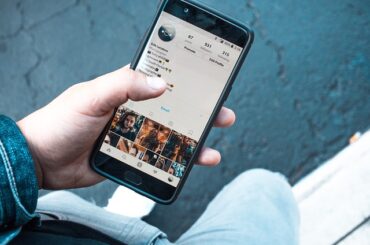Traditional ways of advertising are no longer effective. Commercials and internet commercials are easily missed, skipped, or muted, leaving budgets with nothing to show for consumer acquisition and brand awareness.
In 2018, individuals seek knowledge from persons they see as authorities or experts. That is why influencer marketing is so important. It allows for the formation of real tales and experiences around companies in ways that other forms of advertising cannot.
If you’ve been afraid to go into influencer marketing, maybe these five techniques used by huge firms will alter your mind.
1. Do you like celebrities or no celebrities? That is the issue.
It seems to reason that if a business hires a celebrity with millions of followers, its campaign will be more successful since it will reach a bigger audience.
This, however, could not be farther from the truth.
According to a recent study, when the number of followers grows, engagement begins to decline. Markerly revealed that people with 1,000 or fewer followers had an 8% engagement rate, while those with more than 10 million followers only had a 1.6% engagement rate after analyzing over 800,000 Instagram users. According to the data, recruiting influencers with 10,000 to 100,000 followers yields the greatest outcomes.
One of the main reasons for this is that micro-influencers often establish a following based on what they post on their blog or social channels. If someone constantly publishes about being a parent, chances are that other mothers will follow along and connect to the content of that influencer. With each new post, credibility grows, and this influencer may ultimately become their audience’s go-to authority on the subject.
When that influencer posts a sponsored post on a product they love, they’ve already earned the trust of their followers, and those followers will want to test the product as well. This is a win-win scenario because as more followers start talking about or purchasing the goods, the brand’s follower count and sales should increase.
Micro-influencers are substantially less expensive than celebrities, in addition to having higher engagement rates and a more focused audience. According to Hopper HQ, a single Selena Gomez Instagram post costs $550,000. In comparison, the average cost of hiring a micro-influencer in the United States to post on Instagram is $214. In return for one Selena Gomez post, a company could employ around 2,570 micro-influencers.
Bigelow Tea and Walmart concluded that their money would be better spent with micro-influencers, so they collaborated with Collective Bias on their Tea Moments campaign, and the results were amazing. The product fits genuinely into their blogs and social platforms by employing influencers in the healthy living and wellness verticals. The material was so well received by the influencers’ audiences that Bigelow Tea had an 18.5% increase in sales and over 44 million impressions as a result of the campaign.
2. What Is Creative Freedom and Why Is It Important?
Trying to have too much control over the process is typical error businesses make when initially dealing with influencers. If you talk to an influencer, chances are they’ll tell you that one of the most crucial things they look for before deciding to engage in a campaign is creative freedom. They are aware of their distinct voice, and if they are not allowed to maintain them, they are likely to refuse to work on the campaign. Worse, if they engage in the campaign and their followers don’t like it because it seems fake, the company may start a negative dialogue with their target demographic.
While it may be challenging for corporations to relinquish creative control, influencers must be trusted to perform their best job. This is why it is critical to work with influencers that share your beliefs and style.
DSW’s 12 Days of Converse campaign employed five influencers that matched their desired audience to create two to three pairs of Chuck Taylor and then reveal to their followers that they could win their own pair. Those little nuances made it possible for influencers to unleash their creativity, and the reaction from their following was incredible. The campaign produced over 3 million impressions and over 100,000 interactions for less than $15,000.
DSW is still an active participant in influencer marketing programs, and its income has risen significantly year after year. DSW firm sales were $2.7 billion in the fiscal year 2016, and they are currently at $2.8 billion in the fiscal year 2017, a new high for the company.
3. Go to where your target audience is.
Blogs and websites were some of the only internet channels for informing customers about your product ten years ago. Today, social channels such as Facebook, Instagram, Pinterest, and YouTube are accessible for advertising. So, how do you decide which platform to have influencers post on?
With social media always evolving, it’s tough to determine precisely where you should have material go live so that your ideal target audience sees it, therefore having influencers publish on numerous platforms is an alternative option.
Bertolli recruited nine influencers to create blog pieces, social amplification, and videos about their olive oil products to reach the widest possible audience. As a result, their campaign garnered an estimated 6.8 million total views and $14.37 in earned media income for every $1 spent on it.
The blog postings were excellent for presenting recipes that required the product, and those ideas were simple to share on Pinterest. Instagram was a helpful medium for showing one of the final recipe photographs and directing visitors to their blog for the entire recipe.
Airheads used a similar tactic. The anchor films in their campaign resided on YouTube and were promoted on various social networks to create additional attention. This campaign generated over 1.3 million video views from just three influencers, as well as over 44,000 social interactions across all media.
4. Do you believe that numbers are everything? Not so quickly!
It’s easy to get engrossed in the figures you see as a spectator. For example, if your campaign aim is to generate more than 20 million impressions and 10,000 interactions, it may be tempting to seek out influencers with a large following and a large number of comments or likes on their posts.
Unfortunately, figures do not always convey the whole picture. Indeed, many influencers join in Instagram pods and Facebook threads where they share their material with their influencer colleagues, and everyone then likes and comments to assist that influencer seems to have an active following.
On the surface, the figures seem to be respectable, but on a deeper level, the aim of reaching the target audience is not met.
Hiring influencers that regularly provide great content and suit the brand’s image is one method businesses may avoid this problem. According to Jonathan Long, the creator of Market Domination Media, tiny accounts often outperform bigger ones, sometimes by up to 300%. That’s correct – 300%.
Brands are forced to look at each influencer as a person when they stop looking at statistics. What does that individual bring to the table? Do they communicate with their fans regularly? Do their photographs convey a story?
All of these are considerations that companies should consider before initiating an influencer marketing strategy.
Subaru recognized the value of quality over quantity and paid 58 influencers to make sponsored posts for their Meet an Owner campaign. Subaru recruited relevant influencers in a range of verticals, such as fitness and art, to communicate their story since virtually everyone owns a vehicle.
Subaru not only earned enhanced brand perception and exposure as a result of the 1.9 million likes and 9,000 comments, but they also positioned themselves to have another standout year in the auto industry. Indeed, influencer marketing contributed to their 10% revenue rise in 2016.
5. Surface Data Doesn’t Always Tell the Whole Story
Once a campaign has concluded, it might be tempting to move on to the next major endeavor. However, to maintain a successful influencer marketing plan, it is necessary to examine the data and delve deeper into the statistics of each campaign.
For example, understanding how many referrals are coming your way, how many new leads you’ve acquired, what sales growth you’ve witnessed, and customer acquisition expenses are all important metrics to consider.
Charmin collaborated with Mavrck to monitor clicks to coupons, product reviews, and sign-ups for a whole quarter to search for data patterns like the ones stated above. Charmin was able to observe that they got over 5,300 coupon clicks, 1,800 product reviews, and an average product rating of 4.82 out of 5 during that quarter.
If you’re not sure where to look or how to evaluate your findings, Social Media Examiner has some fantastic recommendations for how companies may do their own analysis with the aid of Google Analytics.




